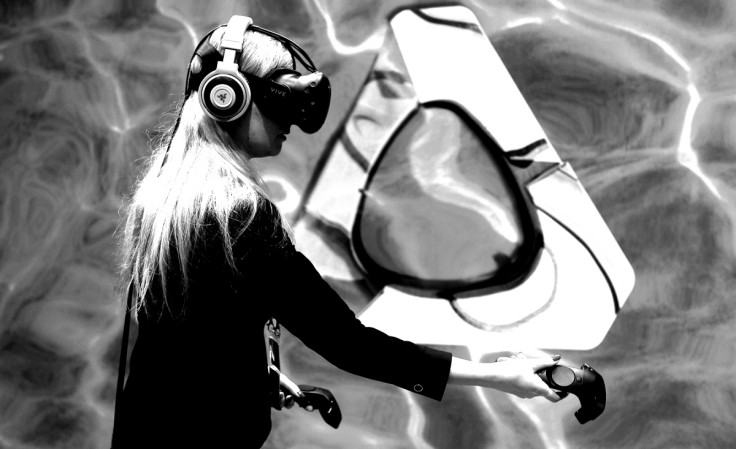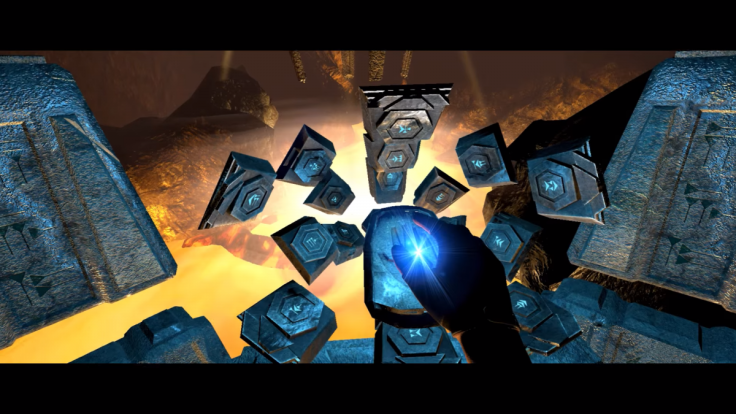HTC Vive review: The light and the dark of virtual reality
When HTC revealed that it had partnered with video game publisher Valve to create its first PC-powered virtual reality headset, the world did not seem to be ready for the VR revolution. The pieces were in play after Facebook took the unexpected step of purchasing Oculus for a cool $2bn (£1.4bn), but the touted 'next-big-thing' for tech and gaming was still something of an unknown quantity.
Low-cost mobile VR devices like the Samsung Gear VR and Google Cardboard were the first to introduce a wider audience to the potential of modern virtual reality, and Sony's PlayStation VR will bring virtual reality to a home gaming console later this year. Right now however, the focus is on the Vive and Oculus Rift, two PC VR headsets which after a lengthy wait, are finally in the hands of the public.
Of the pair, it is the HTC Vive that has garnered the most attention, thanks to the hype surrounding its motion tracking and room-scale VR capabilities. While the Rift focuses on the sat-down experience, HTC and Valve have elected to take bold steps into uncharted territory by turning living rooms into virtual playgrounds.
It's incredibly exciting tech that reminds you of the joyous power of innovation, but the Vive is no longer a promising prototype, it is now the real thing - a £689 retail product that demands as much scrutiny as a smartphone or a tablet. I'm making this clear early, as separating one's opinion of the Vive as a 'product' and as a hallmark for the potential future of virtual reality is a tough call.
IBTimes UK has already published a complete, and lengthy, guide to the HTC Vive but when it comes to a review, there's only one question that needs answering: should you buy one?

HTC Vive review: Design, price and PC requirements
The Vive is undoubtedly a premium piece of kit, and it certainly should be considering the cost. From the moment you unpack the plethora of cables and connectors in the Vive's enormous packing box, the fear you aren't getting your money's worth is put by the wayside.
The Vive headset is quite bulky, but screams 'high-tech' with its distinctive, cyberpunk, sci-fi design. Thankfully the optical experience isn't hampered by any real discomfort, as the padding and general ergonomics fit nicely around the eyes, while the adjustable straps seem to offer enough range to fit all manner of noggins. A knob in the lower right corner (while wearing) also refocuses the optics by adjusting the lens distance.
Aside from a slight light leakage around the nose area if you look directly down, the headset and visor exude design quality. At 0.55kg the Vive feels satisfyingly weighty and durable without ever feeling particularly heavy to wear.
Inside the headpiece you'll find the Vive's two displays (which combine for a 2160 x 1200 resolution). This is far from a 4K display, but virtual reality has never looked this good before, and it is continents apart from the blurry messes found on cheaper devices.
There's an unavoidable blur spot in the very centre of your vision which has been an issue with every VR device I've tried, but when fully immersed, you struggle to remember it's there. Unfortunately, even with a 2160 x 1200 resolution you can still make out individual pixels, which is especially true against black backgrounds or cluttered/finely-detailed environments.
A big question around VR is how long anyone can spend in there before feeling ill-effects. My best was about an hour, after which I felt physically drained. Motion sickness never really become an issue, but I certainly needed a glass of water after an extended session. Breaks would come recommended, but if your PC can keep up and provide a consistent frame-rate then I wouldn't worry about any unwanted physical side-effects.
Speaking of your PC, the £689 retail price is one thing, but boy do you need a whopping computer to run this thing. The cost of the device when factored in with a new GPU or entire rig upgrade will likely terrify all but the most dedicated PC gamers, but that's the price you pay for a PC-powered VR headset in 2016.
Finally, you are going to want some headphones. The buds you get with the Vive are okay, but in-ear headphones are awkward while donning the Vive. Grab a decent pair of over-ear/on-ear cans for the best set-up.
HTC Vive review: Set-up and motion controllers
We've discussed the set-up at length here at IBTimes UK, but review-wise it deserves another mention. The secret weapon in the Vive's arsenal is its 'Lighthouse' motion-tracking, which requires a fair amount of space to fully realise. You can play in 'Standing Room only' mode, but various VR-compatible games require a larger or specific space.
Setting up a space requires users to install two base stations in your would-be-Vive-room, in opposite corners. You get a lovely screw and mount in the box, but no drill/screwdriver of course, so be sure your DIY skills and tools are up to snuff. The lack of adjustable stands is baffling. Sure the price might have gone up a bit, but the value it would add is undeniable and would allow for a more portable experience if you ever move home or want to take it to a friend's house (as long as they have an uber-computer).
After all the power, video and linking cables are in place, the main cable running to the Vive Link Box hub is a bit bothersome as it dangles and tangles between your legs during play. It seems like a unwanted but necessary by-product of the Vive's first generation and is something that needs to be rectified in future iterations. The handheld motion controllers on the other hand are wonderful. These magical wands are user-friendly, adaptable and hold a decent charge. As intuitive as motion controllers can be, you'll forget they aren't a natural extensions of your hands when roaming virtual lands.
HTC Vive review: Software, Chaperone and video games
To avoid walking into actual walls, the SteamVR system that powers the Vive comes with a neat feature called Chaperone. Essentially a grid image that pops up when you approach the limits of your pre-set play area, the Tron-like Chaperone blockades are a clever way of stopping Vive-related injury. You can also adjust their appearance in setting menu if they become too intrusive. A front camera also allows you to peer into the real world in a strange glowing vision of your surroundings - great for not stepping on an unexpected cat and/or child.
In terms of the Vive software, the set-up program has its issues, but is fairly straightforward as long as you know how to play around in Windows if an issue crops up.
The competing HTC Vive and Steam software seems like a strange decision when navigating your game library on a PC. Like it or not, Steam is not very intuitive for someone not familiar with its intricacies, but the stock HTC Vive app menu barely even works - crashing or showing error messages for several games during our tests.

The SteamVR interface when using the Vive is much better, but there is a disconnect between what you can control here and what is on the PC screen, as the main sync-settings are always located on the monitor. Otherwise, it is a functional take on Steam's Big Picture mode, adapted for VR, and carries a lot of the dashboard redundancy found in its source of influence.
Beyond that however, are the games, and the purest Vive experience. When everything works, it is impossibly easy to lose yourself in these explorable, digital plains. Valve's The Lab is the best possible introduction to the Vive's best elements and showcases the developer at its most endearing and funny. From warping around a picturesque mountain vista, to shooting baddies in a spaceship, to something far more mundane like petting a robot dog-thing in Portal-garb, The Lab is an expression of VR as pure playtime and joy.
Cloudlands: VR Minigolf and #SelfieTennis also delight, but there are very few games that go beyond simple VR-friendly concepts. They could uncharitably be referred to as glorified tech demos for future, better titles. The Gallery - Episode 1: Call of the Starseed is the main exception. The Vive's block-out-the-world-and-live-a-new-life experience adds a unique feel to the 80s sci-fi fantasy title, transforming it from a quaint, Myst-esque puzzler into an episodic delight. Its short burst of storytelling and innovative interaction are the perfect template for what could be as the Vive's library grows.
How do you even begin to encapsulate the polarity of feelings the HTC Vive can inspire in an overall verdict?
The HTC Vive is the bastion of high-end virtual reality in 2016, but its cost of entry isn't just a monetary value (despite that being the largest factor). You'll need patience, perseverance and possibly even power tools, but most importantly it requires a will to look past a lot of glaring issues to unilaterally enjoy the Vive in its current state.
It's a phenomenal experience, but a frustrating one; inseparable from technical hiccups, awkward UIs, the necessity of a mammoth PC, an underdeveloped software library, and physical household requirements. The problems are indicative of a product designed for early-adopters who are typically keener than an everyday consumer to problem-solve and overlook numerous niggles as long as there's something 'new'. That 'new' is virtual reality at its current peak, packaged in a smartly designed and comfortable piece of hardware that can render awe-inspiring virtual worlds.
However, a recommendation can only be based on the tolerance level of the potential buyer.
If the Vive's foibles sound like something you can live with, then it is worth it as the future of virtual reality is brighter than ever with its presence. But, if you are just curious about virtual reality and want a simple, pick-up-and-play solution, then the Vive may not be ready to usher in the light of the VR dawn for you just yet.
The Good
- Truly stepping into VR for the first time.
- Intuitive motion controllers.
- Simplicity of Chaperone system.
The Bad
- Very expensive for general consumer.
- Base Station fitting is a nightmare.
- Mediocre library at launch.
For all the latest video game news follow us on Twitter @IBTGamesUK.
© Copyright IBTimes 2025. All rights reserved.






















